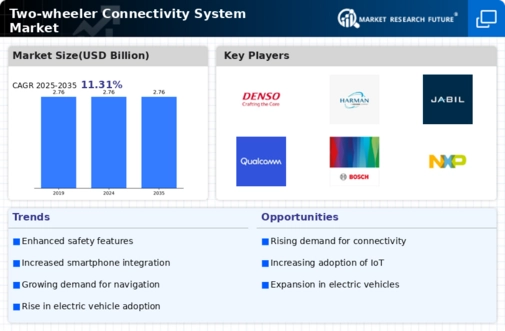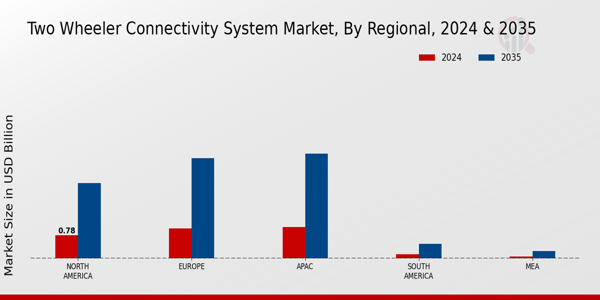The Two-wheeler Connectivity System Market is rapidly evolving, driven by advancements in technology and the increasing demand for connected automotive solutions. As consumers seek smarter and more efficient transportation options, market players are focusing on integrating cutting-edge connectivity features into their two-wheeler offerings.
The competitive landscape is characterized by a mix of established automotive suppliers and emerging technology firms, all vying to capture market share through innovative products and services.
The growing trend towards smart mobility is pushing companies to invest in research and development to enhance the functionality of their connectivity systems, which can include features such as navigation, vehicle diagnostics, and remote monitoring capabilities.
As the market expands, competition is intensifying, necessitating a keen understanding of market dynamics, customer preferences, and technological advancements.
Denso has emerged as a prominent player in the Two-wheeler Connectivity System Market, leveraging its extensive expertise in automotive technology and components. The company is recognized for its strong commitment to innovation, enabling it to introduce a range of advanced connectivity solutions tailored to the specific needs of two-wheeler manufacturers and consumers.
Denso's robust research and development capabilities play a significant role in its market presence, allowing it to develop highly reliable systems that enhance vehicle safety and user experience. Furthermore, the company's established relationships with automotive partners and its experience in the overall automotive market position it as a trusted provider of connectivity solutions.
Denso's strengths lie in its ability to integrate connectivity features seamlessly into vehicles while ensuring compliance with stringent safety and environmental regulations.
LG Electronics is also a key competitor within the Two-wheeler Connectivity System Market, utilizing its technological prowess and experience in consumer electronics to cater to the increasing demand for connected two-wheelers.
Known for its innovative approach, LG Electronics focuses on creating solutions that enrich the riding experience, offering products that include telematics, infotainment systems, and advanced user interfaces. The company leverages its background in IoT and smart technology to provide two-wheeler manufacturers with versatile and user-friendly connectivity options.
LG Electronics is committed to enhancing the sustainability and functionality of two-wheelers through its connectivity solutions, which not only improve user interaction but also contribute to the overall efficiency of mobility systems. The firm’s focus on smart integration of connectivity features ensures that it remains a competitive force in this rapidly growing market.





















